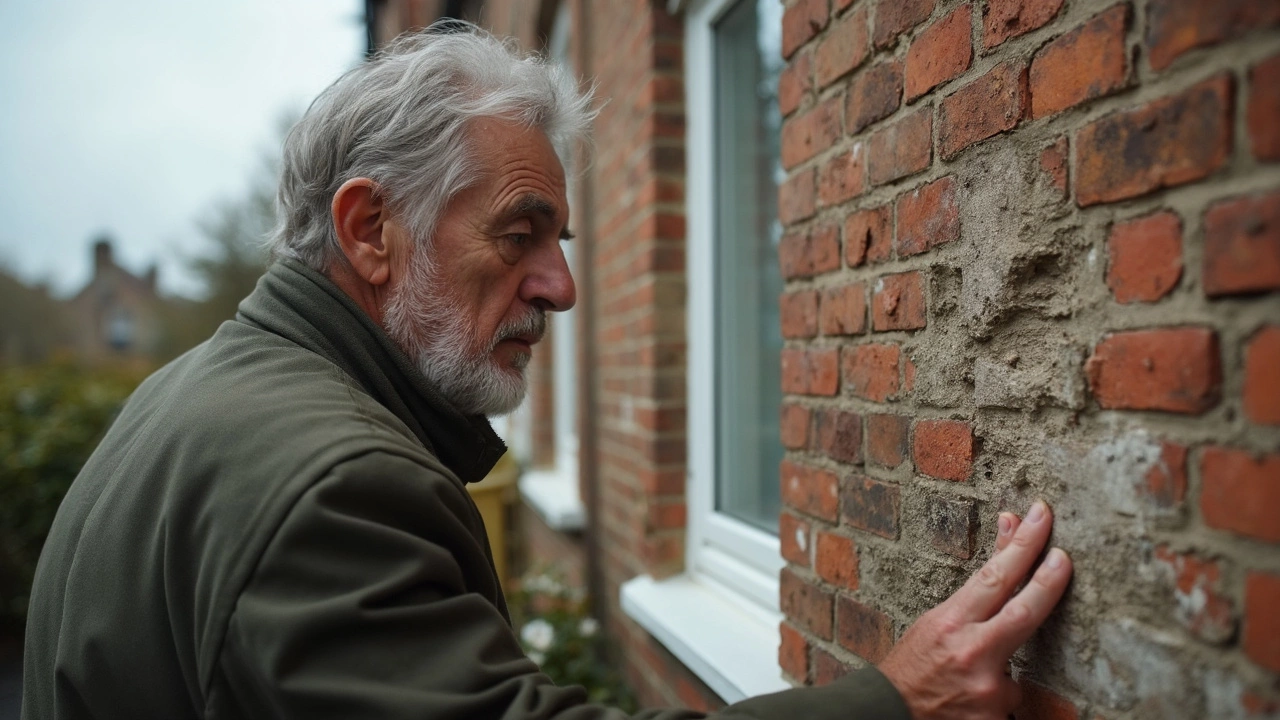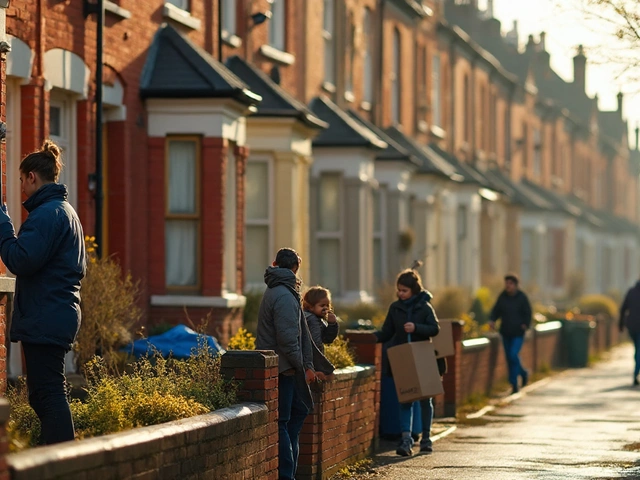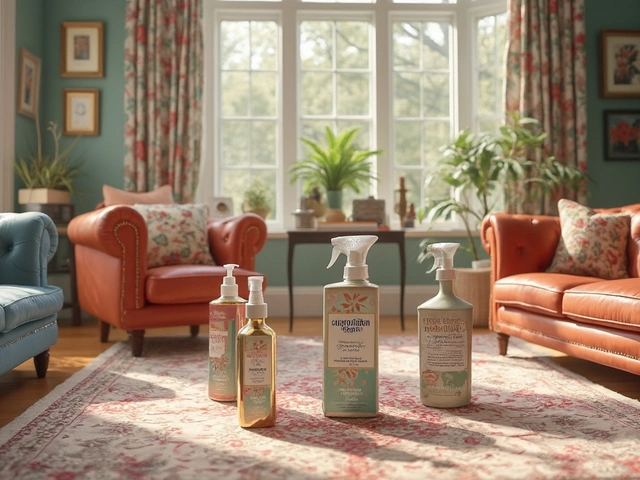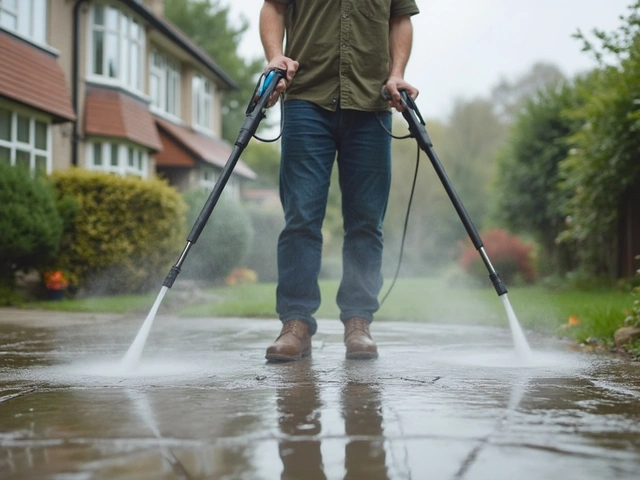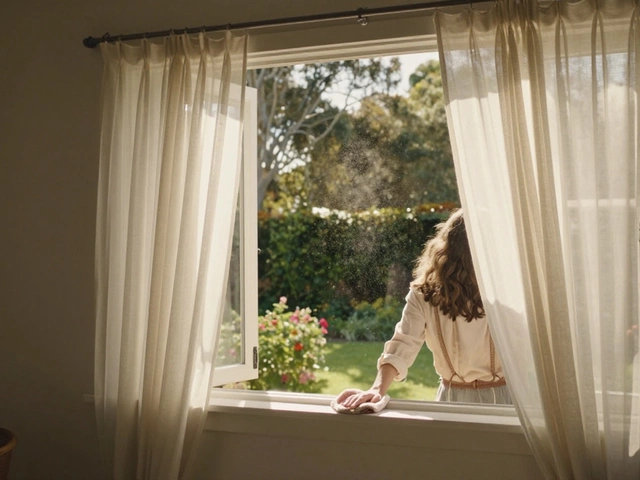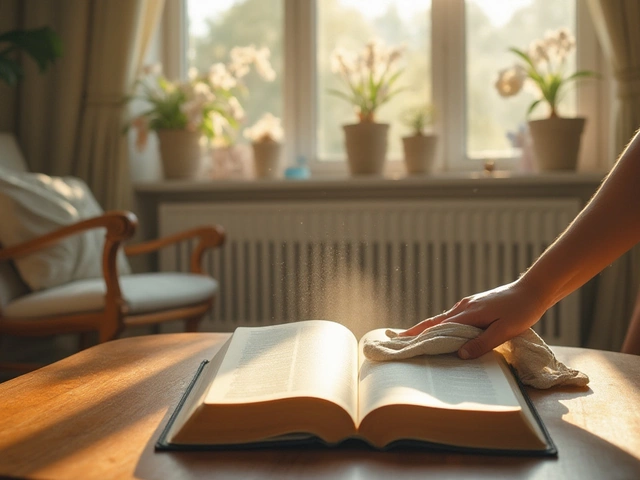Ever wondered if you can just aim that power washer at anything and blast away the grime? It’s not that simple. Sure, pressure washing looks satisfying on those online videos, but spraying your house at the wrong time or on the wrong surface can backfire badly.
Some parts of your house just aren’t made for that kind of force. Soft wood, old paint, and fragile windows can all get ruined fast if you’re not careful. Even spots that seem sturdy—like brick or vinyl siding—can end up with water where you really don’t want it. That’s how mold and rot sneak in when you least expect it.
The point is, before you fire up that washer, you need to know what you’re dealing with. There’s a right and a wrong time for power washing. Not sure what those are? Keep reading and you’ll avoid the classic homeowner mistakes that lead to disaster.
- Understanding Pressure Washing Risks
- Surfaces You Shouldn’t Power Wash
- Situations to Avoid Pressure Washing
- Alternative Cleaning Methods
- Pro Tips for Safe Power Washing
Understanding Pressure Washing Risks
The whole idea behind power washing is to make things clean fast, but a lot can go wrong if you jump in blind. It’s not just dirt that gets blasted off. High pressure can strip away paint, gouge wood, break seals and even force water deep into cracks. Usually, household pressure washers push out anywhere from 1,400 to 3,200 PSI (pounds per square inch). That’s enough to cut into soft materials, not just clean them.
One big risk is water intrusion. When you spray water at windows, doors, or old siding, it doesn’t always stay on the surface. Water can end up behind your walls, in your attic, or under the siding. Once it’s in there, mold and rot start to take over, and you won’t even notice until it’s too late.
Blasting away dirt may feel like you’re helping your home, but sometimes you’re just moving grime deeper or loosening materials that should stay tightly sealed. It only takes a second to lift up a shingle, damage a fascia board, or break a light fixture. Those little mistakes end up costing real money down the line.
Here’s a quick look at some key risks of pressure washing the wrong way:
- Stripping off or chipping paint, especially on older homes with delicate finishes.
- Damaging wood, making it splinter or letting water soak in where it shouldn’t.
- Breaking window seals, leading to foggy glass or even leaks inside the house.
- Pushing water behind siding, which is an invitation for mold colonies to move in.
- Causing cracks or chips in fragile exterior materials like stucco.
According to a study done by a home inspection group in 2023, around 15% of water damage claims in certain neighborhoods came from improperly used power washers. That’s a lot of avoidable insurance calls, just because someone didn’t know the risks.
When you pick up a pressure washing tool, remember it’s not always your best friend. Sometimes, less is more—or none at all—especially on sensitive spots around your home.
Surfaces You Shouldn’t Power Wash
Not every surface around your home can handle the punch of power washing. Blast the wrong material and you could end up with cracks, dents, or expensive repairs. Let’s get specific, so you know when to leave the washer in the garage.
Wood siding—especially older boards—can split, warp, or shed paint if hit with too much pressure. Cedar shakes are the worst; they soak up water and start rotting before you know it. Same goes for decks built before 2004—if you don’t know what kind of treatment the wood had, play it safe.
Asphalt shingles and roof tiles are another no-go zone. That high-force blast knocks granules off your shingles, cutting their lifespan in half. Plus, water can sneak up under the tiles and into your attic.
Windows, especially single-pane or older types, can crack from a direct hit with a pressure washer. Plus, water can force its way into the frame, causing wood rot and ruining seals. If you don’t want foggy windows and leaks, use gentle soap and a hose instead.
- Lead paint: Any house built before 1978 could have lead paint hiding under newer coats. Power washing doesn’t just remove it—it sends hazardous chips flying everywhere. That’s dangerous for your family, pets, and even your neighbors.
- Brick with damaged mortar: Solid bricks can take a gentle clean, but loose mortar turns your wall into a sponge. You’ll blast out the sandy filler and open the door to moisture damage.
- Electrical fixtures: Outdoor outlets, light fixtures, or any exposed wiring should never be sprayed. It sounds obvious, but one wrong move and you’re risking shock or a fried system.
Here’s a quick breakdown to keep things clear:
| Surface | Why to Avoid Power Washing |
|---|---|
| Older wood siding | Splits, warps, loose paint and water damage |
| Asphalt shingles | Loss of granules, leaks, shortens roof life |
| Lead paint | Hazardous dust and chips everywhere |
| Windows | Broken glass, ruined seals, water leaks |
| Brick with loose mortar | Dislodges filler, moisture issues |
| Outdoor electrical units | Shock hazard, system damage |
When in doubt, check if the surface is strong, sealed, and meant for water exposure. With house maintenance, using the right method keeps your home in shape instead of sending you shopping for repairs.
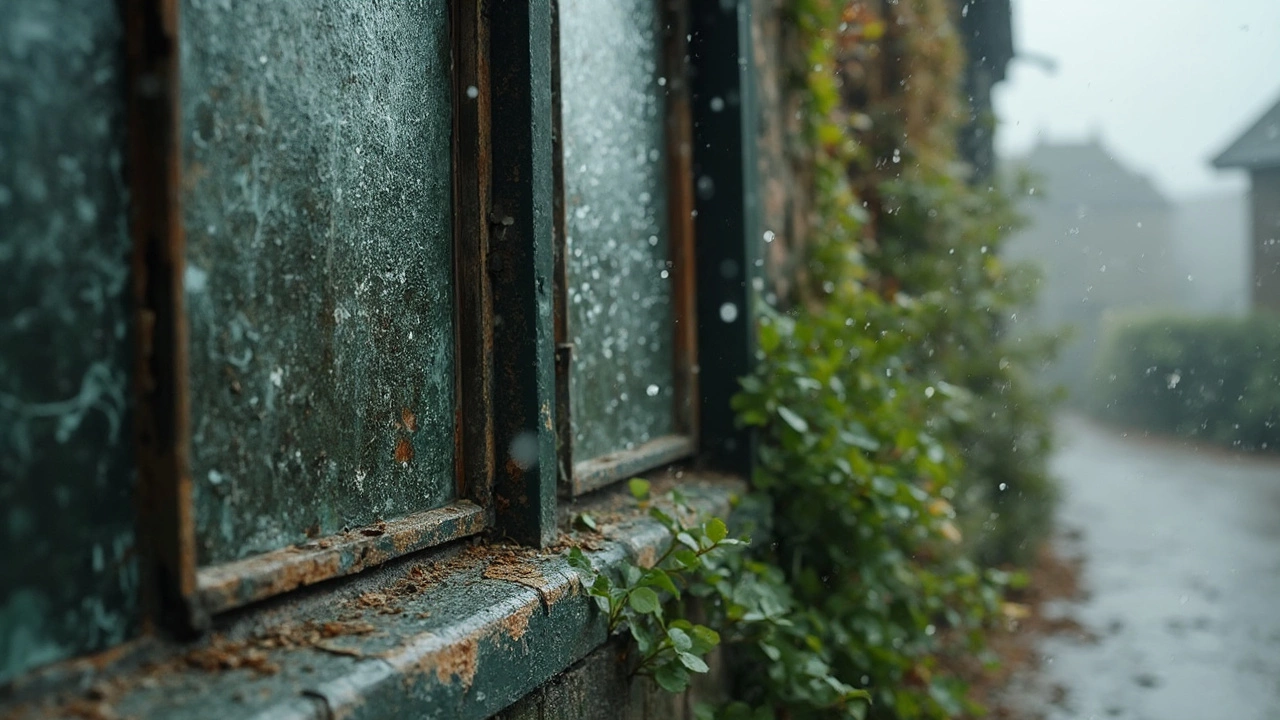
Situations to Avoid Pressure Washing
You might think power washing is a one-size-fits-all fix, but there are clear situations where blasting away isn’t just risky—it can cost you a ton in repairs.
First off, don’t even touch your house with a pressure washer during freezing weather. Water seeps into cracks and freezes, then expands and cracks everything wider. The same goes for when rain’s in the forecast—it just defeats the purpose and can even wash cleaning agents into your garden.
After major storms or floods, a lot of people rush to clean up using power washers. That’s a big mistake if your walls or foundations are still wet inside. Trapping moisture with paint or sealant right after pressure washing is a call for mold and rot. You’re better off waiting until everything dries out, usually a few sunny days at least.
Another red flag: houses built before 1978 often have lead paint. The CDC warns,
Pressure washing lead-painted surfaces can send toxic dust and paint chips into the air and soil, putting families at risk.Scraping or pressure washing old, peeling paint isn’t just risky—it's potentially illegal without taking safety precautions.
You should also skip power washing if:
- The exterior is damaged or has loose siding, since the force will just rip things off.
- Any electrical outlets, wiring, or lighting are exposed. Water and electricity don’t mix—period.
- Your landscaping is fragile or freshly planted. The spray can uproot flowers or erode soft soil in a single pass.
- There are open gaps around windows or doors. High-pressure water will find its way inside, and that’s never good news for drywall or insulation.
Run a quick check before you ever point that pressure washer at your home. If you spot any of these issues, put the nozzle down. Your house (and your wallet) will thank you.
Alternative Cleaning Methods
Not every problem needs to be blasted away with a power washing machine. Sometimes the gentler approach actually works better and keeps your house safe. There are a few tried-and-true options that get the job done without risking damage.
For siding, especially older wood or painted surfaces, a soft-bristle brush and a bucket of soapy water go a long way. Mix a bit of mild dish soap in warm water. You can use a long-handled brush to reach higher spots, making sure you scrub in the direction of the siding to avoid forcing water behind it. Rinse with a regular garden hose – you’ll be surprised how much grime just slides off this way.
If mildew or algae are your main headaches, store-bought cleaners labeled for houses are worth a look. Many are ready to attach straight to your garden hose and spray on. Look for products marked as safe for your specific siding, like vinyl, stucco, or brick. Just follow the directions and don’t forget to rinse thoroughly.
For stubborn stains on hard surfaces like brick or concrete, try using oxygenated bleach instead of the harsh stuff. It’s way less likely to wreck your landscaping and still packs a punch for removing mold or algae. Scrub it in, let it sit for about ten minutes, then hose it off.
- Soft washing: This is a lower-pressure cleaning method that uses gentle streams and special cleaners. It’s often preferred for roofs or delicate surfaces.
- Spot treatment: Rather than wash the whole wall, just tackle problem areas with a sponge and cleaner.
- Steam cleaning: Great for small, tricky spots. Heated vapor can loosen dirt without flooding your walls or yard.
Here's a quick side-by-side on cleaning options you can use instead of pressure washing:
| Method | Best For | Notes |
|---|---|---|
| Soft Washing | Delicate siding, roofs | Needs special cleaner; pros often handle this |
| Hand Washing | Small areas, fragile paint | Low risk of damage |
| Oxygen Bleach | Mildew, algae | Plant-friendly, less harsh than chlorine |
| Steam Cleaning | Masonry, grout, tiles | Low water use, no chemicals |
Trying these alternatives is often safer than jumping straight to a high-powered blast, especially if you’re not sure what you’re working with. Plus, your home will thank you later for not taking unnecessary risks with pressured water.
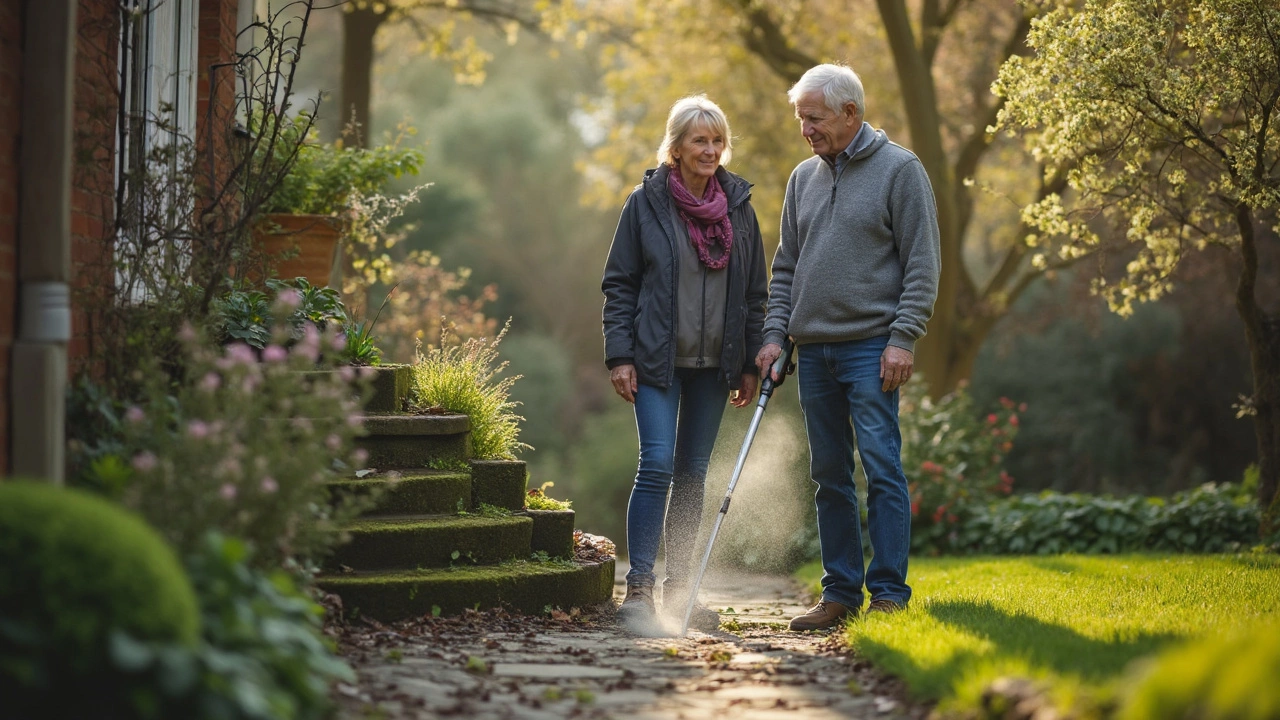
Pro Tips for Safe Power Washing
Getting clean results without wrecking your home just takes a bit of know-how. If you want to use your power washing setup, these tips will keep things tidy, not risky.
- Check the surface first. It sounds obvious, but people end up blasting paint right off their siding or splintering wood decks because they didn't take a second to check if the surface could handle it. Old, cracked, or delicate materials should often be skipped.
- Start with low pressure. A lot of the cleaning is done by the water flow, not just the pressure. Use the lowest setting and only go higher if absolutely needed. Cranking it up from the start is a classic mistake and can force water behind siding, which leads to house maintenance issues down the road.
- Use the right nozzle. Swap out that zero-degree pinpoint nozzle for something wider (like 25 or 40 degrees). A narrow, sharp jet will gouge surfaces in seconds.
- Mind your angles. Spray downward at a 45-degree angle whenever possible. If you blast upward, especially at siding or under eaves, you can shoot water right into the walls—not good for any type of home care.
- Keep your distance. Hold the lance about 12-18 inches from the surface. Moving in close seems to clean faster, but it ramps up the risk of damage and leaves stripes or cut marks.
- Watch out for windows and vents. They’re notorious for leaks. Cover them or work around them with super-low pressure to avoid flooding inside your house.
Here’s a handy table for suggested pressure settings (in PSI) for common tasks:
| Task | Recommended PSI |
|---|---|
| Wood Decks | 500-1200 |
| Vinyl Siding | 1300-1600 |
| Brick | 1500-2000 |
| Concrete | 2500-3000 |
One quick tip a lot of folks miss: never use bleach or harsh chemicals in your pressure washer unless it’s rated for them. Stick to cleaners made for exterior cleaning and always rinse thoroughly. That way, you keep your equipment and your house in good shape.
